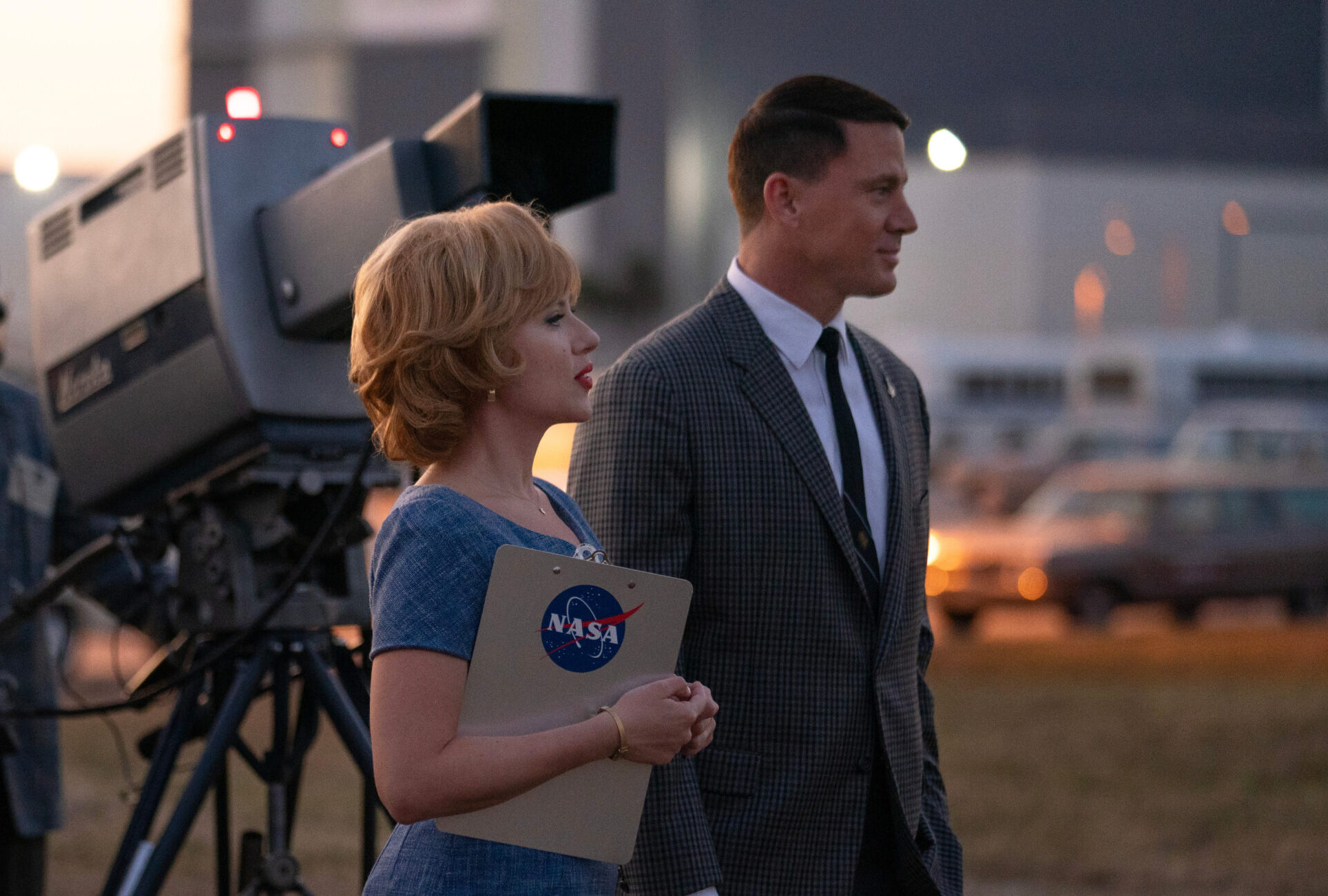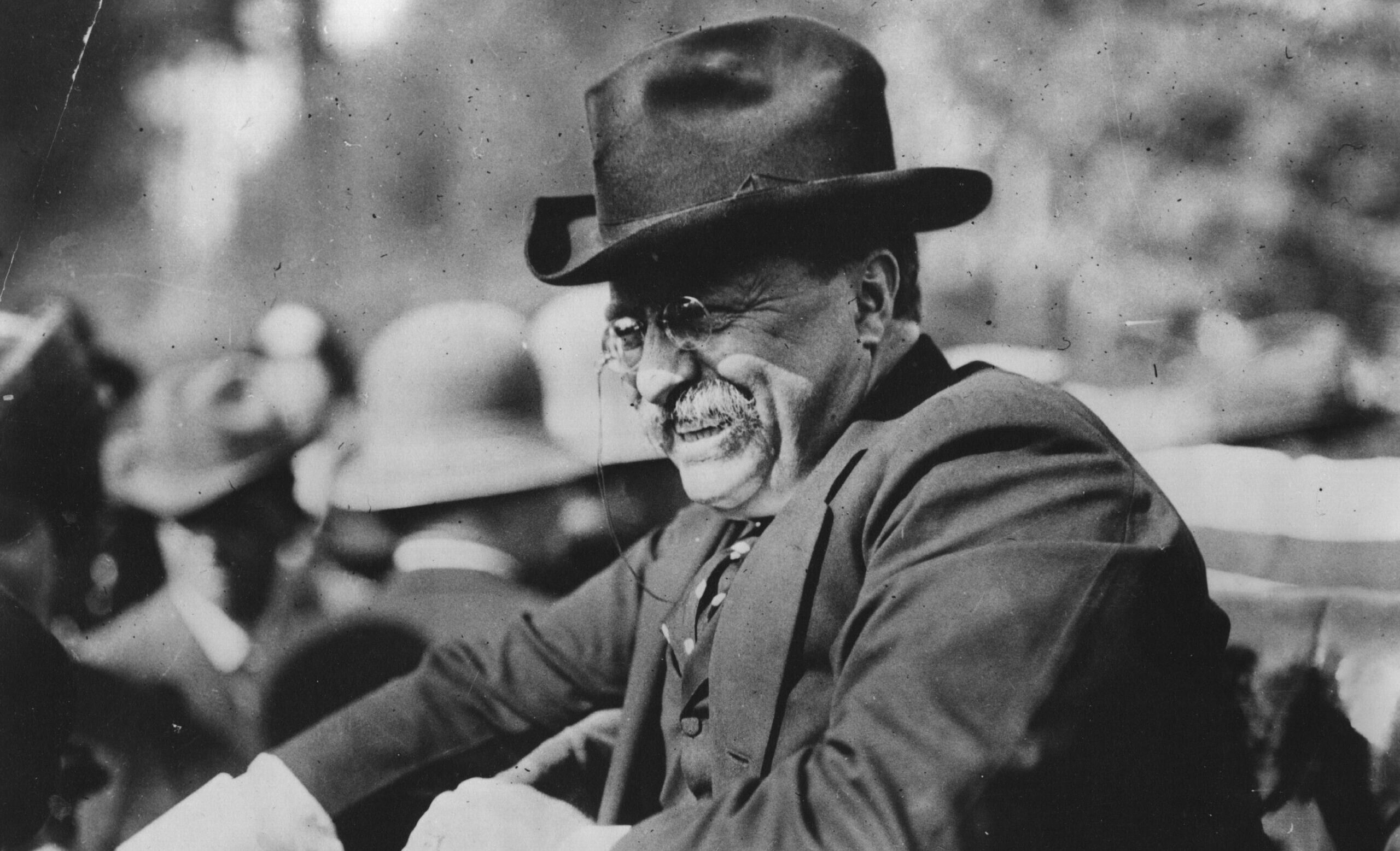Why was it so important that the world watched the Apollo 11 moon landing on television half a century ago?
Fly Me to the Moon is a romantic comedy about mankind’s greatest real-world exploratory achievement, when the United States became the first country to reach the moon in 1969. “Killer” Kelly Jones (played by Scarlett Johansson) is the best and slipperiest advertising executive in New York, hired by the federal government to help NASA better promote the moon mission. This is in the wake of the real-life botched Apollo 1 mission in 1967, in which three astronauts lost their lives in a cabin fire. Jones is there to brighten up and elevate NASA, not only to heighten public interest but to keep funding flowing from Congress.
There are wristwatch sponsorships. Jones puts NASA in Tang ads. She cross-markets the Apollo 11 mission with Fruit of the Loom underwear. In one scene, she has the astronauts driving Corvettes. Jones creates an ad for Crest toothpaste as “the only brand trusted by Astronauts.” She explains, “Brands get a tie-in money can’t buy and NASA works its way into the minds of everyday people.” That’s exactly what the government wants.
Neil Armstrong (Nick Dillenburg) and his fellow astronauts are photographed wearing Omega watches, promoted as the first brand-name timepiece to go to the moon. Kelly makes clear that she doesn’t really care that this won’t actually happen. It’s all marketing. Truth is secondary for her and even less important to the clandestine Nixon administration official who hires her, Moe Berkus (Woody Harrelson).
Fly Me to the Moon reflects an America that had more of a shared purpose than the fractious United States of today.
None of this sits well with NASA launch director Cole Davis (Channing Tatum), whose only interest is in successfully running his team to complete the mission. Davis, a veteran pilot who wants none of what Jones is selling, is forced by the government man Berkus to bend to her marketing ideas. After Davis tells Jones that his team doesn’t do interviews, she hires actors to play them. Davis is outraged. When the actor hired to play him is impressed that he flew sixty missions in Korea, Davis quickly lets him know it was only fifty-two missions. Jones rounded up to enhance his image.
Davis loathes the fact that something so important to the country, and to him, is being reduced to mere marketing campaigns. But for Jones and Berkus, the marketing takes precedence—even over the actual mission, or at least the appearance of it.
At the center of the plot is Berkus’s insistence that Jones film a fake moon landing as an alternative in case the actual moonshot goes awry. Davis had resisted the idea that the mission should be televised at all. Berkus informs him that those at the very top—the president—want it to be.
What matters to Berkus is the perception that America beat Russia to the moon. To believe it, people would need to see it.
Fly Me to the Moon reflects an America that had more of a shared purpose than the fractious United States of today. Yes, the Vietnam war had divided the country and Watergate was around the bend, but real communities in which people knew their neighbors existed in greater numbers, biological sex wasn’t up for debate, and there weren’t innumerable cable channels, podcasts, and streaming and social media platforms to distract Americans from one another. There was a national glue that is wanting today.
A short summary on X by Scott McConnell, one of the founders of The American Conservative magazine, communicates the film’s poignancy: “Fly Me to The Moon is unexpectedly really good. Teared up for a sec at the launch, not supposed to in a romantic comedy. Boomer yearning for a real country.”
It’s an excellent movie that surpassed my expectations, and it’s actually lighter on rom-com elements than its trailers might lead viewers to believe. Some critics have taken issue with the film’s conventionality, but it’s less conventional than some of them contend, and the ways in which it is conventional work well for this story.
Fly Me to the Moon captures the popular culture spirit of the late 1960s, drawing on every familiar reference point from old Walter Cronkite reports to Tab soda to hippies, and more. Even so near the dawn of the television age, the medium had quickly changed how Americans saw their country.
Though Davis thought the mission too honorable in itself to worry about showing it to the world live, Berkus and Jones turn out to be right, both in the film and in reality. Watching Apollo 11 land on the moon was one of the watershed moments of the era.
Six hundred fifty million people watched. It was part of their shared story—a truly amazing and unprecedented story. That fleeting window of time was the American moment. It had to be shown, and it had to be watched.
My great-grandparents thought the moon landing was staged. Some online eccentrics still think this, despite overwhelming evidence to the contrary. Fly Me to the Moon gives a little cinematic life to this classic conspiracy theory, showing a U.S. government with no qualms about staging it if necessary.
“The truth is still the truth, even if nobody believes it,” Kelly Jones assures Cole Davis at one point. “And a lie is still a lie, even if everybody believes it.”
In 1969, America believed in the Apollo 11 moon mission, and it was no lie—in fact or in spirit.














